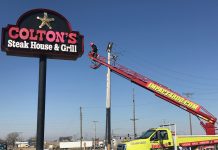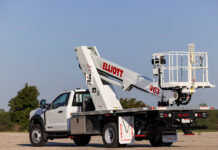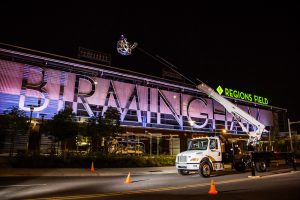 Sign projects requiring service equipment call for a bit more preparation before starting the installation. We talked to a few service equipment manufacturers about what installers should do to set up the job site for the most successful—and safe—installation.
Sign projects requiring service equipment call for a bit more preparation before starting the installation. We talked to a few service equipment manufacturers about what installers should do to set up the job site for the most successful—and safe—installation.
Site Survey
Before starting any installation, manufacturers say a site survey is a must.
“A work site survey is required every time the equipment relocates to a new location,” says Alan Calta, director of Product Safety, Quality, and Reliability at Elliott Equipment Company. “The survey should be conducted the day of equipment use and before the equipment is operated.”
The site survey should identify any possible hazards like debris; ditches; road, pedestrian, or worksite traffic; overhead obstructions and electrical lines/conductors; insufficient supporting surfaces such as soft ground or tamped earth fills; sub-surface chambers such as underground utility components or septic systems; etc.
The weather itself can also present a hazard. “Be sure to check your local weather forecast for lightning and high wind conditions, rain, snow, or any other element that can affect you,” cautions Manitex Product Support Representative Michael Grider.
In addition to keeping workers safe, a site survey also allows shops to make sure they have what they need.
“It will ensure that you will have the proper materials and tools on the site when you are ready to go to work, and if any additional help will be needed during the installation,” says Bryan Wilkerson, vice president of Wilkie Manufacturing.
Location, Location
As part of the site survey, installers will also want to pay attention to where to best position the service equipment.
“Every job site must be carefully surveyed to make sure the equipment available can safely reach the work location. If necessary, bringing in different equipment needs to be an option, rather than cutting corners on safety to use what’s on hand,” says Altec Sentry Safety Training Manager Phil Doud. “The best position is one that avoids any hazards in the job site, while also staying within the reach and capacity of the unit for the load being lifted.”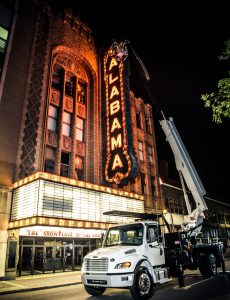
Grider says there are four main things installers should look for when choosing a spot for their equipment: “One, know where you will be lifting and swinging objects as well as make sure there are no obstructions in the way. Two, ensure that the area where the crane will be set up is clear to swing and there aren’t any underground or aerial obstructions when performing the task at hand.
“Three, make sure the ground is rated to hold the weight of the crane along with the desired load. Four, make sure the location has been approved for the desired application.”
If the install requires the use of a telescopic boom, additional calculations may be needed to determine a location for the equipment. “A qualified operator should use the manufacturer’s load capacity and range charts to put the unit where boom angle and height optimize capacity for the task being performed,” says Doud.
Once a location is chosen, ensure it’s clearly marked to surrounding traffic with barricades or tape. “Make sure you have your site adequately demarcated to ensure it is clear of traffic, bystanders, passersby, and the like,” says Calta.
Equipment Preparations
The site has been inspected and a location has been chosen, but the installers aren’t ready to go up in the air just yet. Be sure you’ve performed all the necessary inspections and tests on your equipment before operating it.
“Start with a daily inspection first thing every morning. A log of a daily inspection is required by OSHA,” says Wilkerson. “From there, you would begin your day on the job site by stabilizing the truck. This includes checking the wheels and setting the outriggers and properly leveling it.
“Get all materials and tools ready for the installation and inform any additional persons on the site of what you intend to do and when. OSHA requires a lift plan and site safety meeting to discuss the plan with everyone.”
In addition to these checks, the equipment must be tested before use. “All controls and safety devices on aerial units and cranes must be tested and functional before placing the unit in service before the beginning of each shift,” says Doud.
Calta says to use the pre-start inspection criteria in the manufacturer’s manual as a guide as well as all applicable federal, state, and local inspection requirements. He says these requirements include, but are not limited to, the following steps:
- Perform a walk-around inspection looking for cracks, corrosion, damaged components, missing bolts or fasteners, etc.
- Check visual and audible operator aides for proper operation per the manufacturer’s requirements.
- Visually inspect fiberglass and insulating components for visible damage and contamination.
- Check for missing or illegible operational and instructional markings.
- Check hydraulic and pneumatic systems for observable deterioration and excessive leaking.
- Check electrical systems for malfunction, dirt, signs of excessive deterioration, and moisture accumulations.
- Perform functional tests that include setting up the equipment for operation, including outriggers and stabilizers; cycle each boom function through its complete range of motion from the lower controls, except where operation through the complete range of motion would create a hazard; and check functionality of emergency controls.
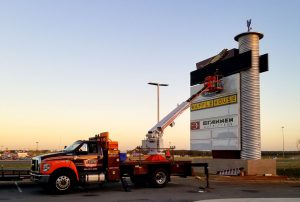 If any problems are found, they need to be addressed before starting work. “Any suspected items shall be carefully examined or tested and determination made by a qualified person as to whether they constitute a safety hazard,” says Calta. “All unsafe items shall be replaced or repaired before use.”
If any problems are found, they need to be addressed before starting work. “Any suspected items shall be carefully examined or tested and determination made by a qualified person as to whether they constitute a safety hazard,” says Calta. “All unsafe items shall be replaced or repaired before use.”
Final Considerations
Mistakes happen, and equipment manufacturers say the most common ones relate to the setup and operation of
the equipment.
“Setting up and operating too close to power lines continues to be a major contributor to injury-causing accidents with aerial devices, as does operating beyond manufacturer’s slope and capacity limitations,” says Doud. “Take time to consider the big picture at each job site, rather than just the job itself. It is a good habit to do this every time the unit is moved, even if only to a nearby position.”
According to Wilkerson, another common error is not being prepared with all of the necessary tools and materials for the job, which leads to repeated trips back to the shop. Wilkerson also reminds installers, “Always wear the proper safety equipment like a hardhat, steel toe boots (if needed), safety glasses (if needed), fall protection, etc.”
Above all, always remember to follow all laws and industry safety standards, as well as manufacturer’s requirements. “Many questions regarding the safety and operation of a boom truck or crane can be answered by reading and understanding the operator’s manual,” advises Grider.
By Ashley Bray



